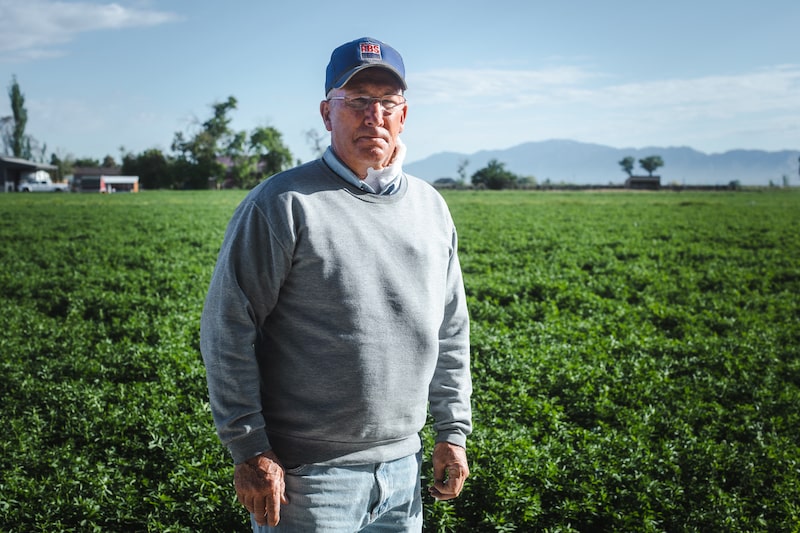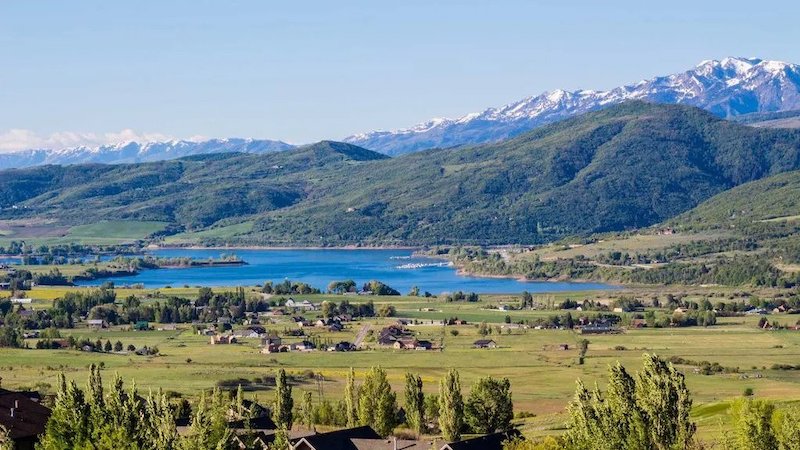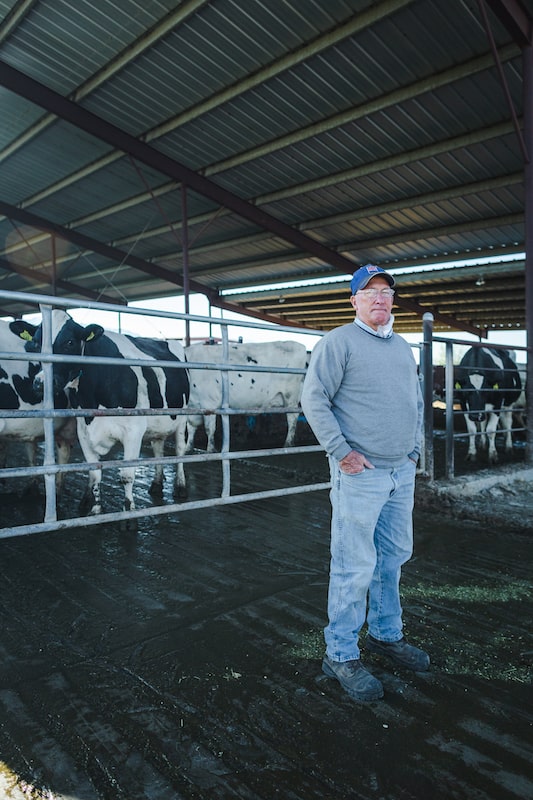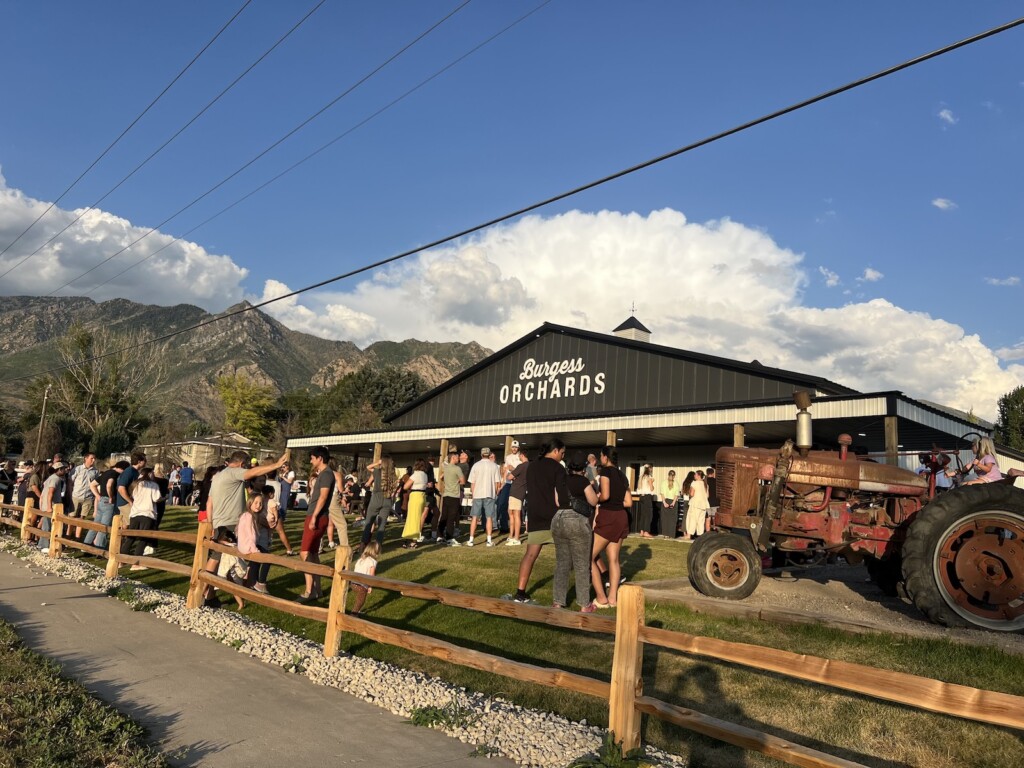
Utah’s best farmland is disappearing. Just ask Utah Farm Bureau Federation President Ron Gibson.
“We are losing the most productive farmland in the state to development,” Gibson said recently, referring to the fertile land that first attracted pioneers to settle in Salt Lake City and along the Wasatch Front.
“We have one of the best economies in the country … so people want to live and work here,” Gibson said. “So now we have a shortage of houses.” And that’s how homebuilding became their direct competition.
Gibson’s family is now into its seventh generation of farming and raising dairy cows in western Weber County. While he’s seen fellow farmers sell off their land, Gibson said he has no plans to join them.
“We don’t care how many zeroes are behind the number. We want to farm here,” Gibson said. “To us, it means so much, but in order to do that we have to be economically viable.”

Packing up
Dave Brown currently divides his time between his Eden farm and his 300-acre operation in Virginia. But he recently sold his 16 acres in Eden to a developer and plans to bid Utah farewell by fall. But through the summer he’ll keep growing alfalfa to feed his beef cows. Brown worries about the price of alfalfa, which has now reached $12 per bale.
“I wouldn’t pay it,” Brown said. “I’ve sold alfalfa for $1.25 to $1.50 per bale in my lifetime, and a year or so ago it was $8 per bale. But in California it was $12 a bale 25 years ago.”
Rising costs, combined with skyrocketing property taxes, drought and encroaching growth, convinced Brown it was time to leave his slice of paradise in Eden.
“This weekend we had to listen to car after car, motorcycle after motorcycle all day long,” Brown said in mid-May. “That’s what we want to get away from ― all the traffic.”
At 55, he also likes the timing for such a change.
“If I hadn’t sold this, I would have just worked myself into the ground until I was too old to do anything,” Brown said. “Now I’m going to have time and be young enough and healthy enough to do things.”
Digging in
Scott Wayment, 73, farms about 230 acres in Warren, an unincorporated community in far west Weber County. He and his 40-year-old son raise alfalfa and corn to feed their herd of dairy cows.
“I’ve been doing it forever,” he said of the family livelihood that he learned as a boy. “Farming’s a business, and you really have to mind your P’s and Q’s financially. Everything you do, you have to do right. There’s not a lot of margin for error.”
But now farmland in his area sells for about $40,000 per acre, due to development driving up demand. Even so, he plans to stay put for now.
“I’ll eventually retire, but my boy wants to farm so we’ll do it as long as we can,” Wayment said. “It’s a lot of pressure, some that I’d really like to get rid of one of these days.”
Long term plan
Gibson said that the Utah Farm Bureau is teaming with the Utah Department of Agriculture and Food to devise a 30-year “agri-structure” plan ― similar to what the Utah Department of Transportation compiles for roads.
Part of that plan involves beefing up Utah’s ability to process and sell locally the food grown in-state.
“We produce 90 percent of the dairy products that we use in the state right here in Utah. And that’s pretty awesome,” Gibson said. “But that’s because we have the milk plants right here in Utah to supply that market ― even though they’re old.”
The same cannot be said for local beef, where Utah lacks in-state processing facilities, Gibson said.
The Farm Bureau recently launched farmersfeedingutah.com to give Utahns an online alternative to buying groceries processed by giant out-of-state corporations.
“We’re focusing on local protein ― we haven’t got the produce part of it figured out quite yet,” Gibson said. “They’re awesome products and that money goes directly to the farmers.”
RELATED CONTENT
Tagge’s Famous Fruit & Veggie Farms on the Biggest Challenges that Utah Farmers Face Today
Bulldozing Utah Farms For Vacation Condos: Is this what progress looks like?
They are stealing our water, Liberty Utah
Trouble in Paradise: Ogden Valley Considers Its Water Use Future






